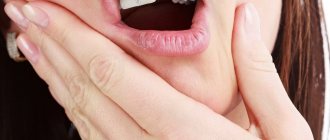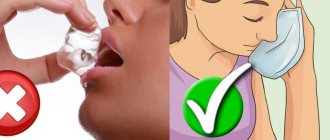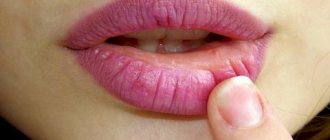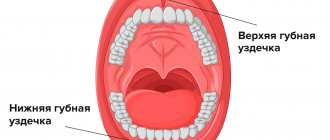WHAT WORRIES YOU? PAIN during intercourse HOW TO GET YOUR VIRGINITY BACK YOU DO NOT like the labia CYSTITIS after sex DARK perineum SIZE of the vagina INTIMATE life after childbirth LACK OF ORGASM WHAT IS YOUR INTEREST? Plastic surgery of the labia Restoration of virginity Surgical defloration Vaginal reduction Clitoral plastic surgery Intimate muscle training How to achieve orgasm HOW TO DO IT? Get intimate plastic surgery... Get contour plastic surgery... Intimate cosmetology... Take tests for a fee... See a gynecologist
In addition to being concerned about the appearance of their genitals, many women experience soreness or other problems related to the health of their labia. Inflammation, pain, swollen or irritated tissue and itching are common problems in this intimate area. Additional complaints include stretching after childbirth, pimples, increased thickness, and unusual or tender lumps on the inner surface of the labia minora.
The female reproductive system is divided into external and internal. When a process occurs in one organ, there is a risk of it occurring in the other. Infections often begin in the folds of skin of the external genitalia, primarily because they are moist due to their proximity to the urethra and vagina. For many women, the initial symptoms of genital diseases, especially itching, burning, swelling, discomfort, begin with minor irritation and can then progress and spread to the rest of the vulva and vagina.
Other symptoms that may occur with inflammation of the labia may include pain in the lower abdomen, burning when urinating, and increased vaginal discharge. They are usually thick, yellow, green, and have a persistent unusual odor. The most common causes of vulvar and vaginal discomfort are thrush and bacterial vaginosis, and these can be successfully treated with medication. Sexually transmitted diseases are a concern both in terms of correct diagnosis and rational, effective treatment.
Inflammation of the labia minora and majora can often be accompanied by the formation of erosions and ulcers on their surface. As a result of scratching, the ulcers can merge and form confluent erosive surfaces that are prone to bleeding. Ulcers are most often the result of the spread of a virus or infection that leads to inflammation. Itching of the external genitalia in women is present in almost any type of infectious process. Inflammation of the labia is almost always accompanied by itching, which aggravates the severity of the process. The fact is that constant trauma when scratching an intimate area contributes to the spread of the inflammatory infiltrate and an increase in the number of ulcers. The addition of secondary microbial flora is also possible.
But inflammation of the genital organs is not always a consequence of infection. It may be a manifestation of an allergic reaction to the substance. Most often these are remnants of washing powder, lubricant on a condom or intimate hygiene gel. Sometimes inflammation can be a response to lack of hygiene in partners. This fact must also be taken into account during intimacy.
Inflammation of the labia may be a consequence of recent hypothermia (for example, after a swimming pool or simply in cold weather). As a result, dense formations the size of a pea are palpated in the area of the external genitalia - this is an inflamed lymph node.
Why do the labia become swollen after sex?
Some girls are frightened by the situation when, after sex, the labia is swollen - one or two at once. In fact, nothing terrible happened, because they are equipped with a large number of venous and arterial vessels and nerve endings. Since one of the erogenous zones of the female body is located in this place, any caress or simple touch causes swelling of the lips of the genital area. The quantitative increase in their size depends on the individual characteristics of the body and the level of hormonal levels. By the way, according to the observations of gynecologists and reviews from the patients themselves, rubbing, itching and swelling occur in girls and women who have enlarged, stretched labia of complex shape.
If the change in the size of the labia, their swelling and the desire to scratch them lightly are associated only with intimate contact, then there is no need to worry. But if swelling does not go away after 8-10 hours after sexual intercourse, you should think about visiting a gynecologist, as the cause may be a disease.
If any discomfort occurs in the intimate area, including when the labia minora are swollen, it is worth determining the cause and a good gynecologist will help with this. Reception of a specialist in our clinic daily, from 10-00; pre-registration by phone 8(495)761-1085 or online on the website.
general characteristics
Pain in the labia area is most often observed in acute and chronic specific and nonspecific infectious diseases. Other possible causes are degenerative and atrophic changes, allergic reactions. With local inflammatory processes, there is a danger of upward spread of infection with damage to the vagina, cervix and body of the uterus, ovaries and fallopian tubes. Exogenous factors contributing to the development of this group of pathologies are:
- neglect of hygiene;
- mechanical injuries to the labia during sexual intercourse, using pads for too long, wearing rough and tight clothing;
- chemical irritation and skin damage due to the use of inappropriate hygiene products or attempts at self-medication;
- abuse of antibiotics, irrational use of hormonal contraceptives, radiation therapy.
Endogenous disorders that create favorable conditions for the occurrence of inflammatory and atrophic processes in this area include:
- metabolic and hormonal disorders: decreased estrogen levels, diabetes, obesity, deficiency of vitamins and minerals;
- urethro-vaginal, vesicovaginal and rectovaginal fistulas;
- skin diseases: psoriasis, perineal eczema;
- helminthic infestations, intestinal dysbiosis.
How to treat vulvitis in women
The gynecologist will answer this question after making a diagnosis. The pathology is detected during a gynecological examination, the cause is determined after additional examinations.
Treatment for vulvitis includes:
- Intravaginal irrigations and baths to alleviate the patient’s condition;
- Drug therapy - antibacterial, hormonal, homeopathic, immunostimulating, antifungal, anthelmintic drugs, depending on the causes of the disease. Medicines are prescribed in the form of tablets, ointments, suppositories;
- A diet excluding sweet, salty, spicy and alcohol.
Vulvitis during menopause requires careful selection of hormonal medications. It is necessary to compensate for the deficiency of estrogen in the body with pills in order to relieve a woman of vaginal dryness and other unpleasant symptoms.
In some cases, gynecologists decide how to treat vulvitis, together with an infectious disease specialist, nephrologist, urologist and other doctors of related specialties.
Why do the labia hurt?
Bacterial vulvitis
Acute vulvitis is manifested by pain, aggravated by touch, movement, and urination. Itching and burning are observed. The labia are red, swollen, sometimes covered with erosions and ulcers. With inflammation caused by staphylococcus, the discharge is thick and yellowish, with E. coli - greenish, watery, with an unpleasant odor. Sometimes general hyperthermia and inguinal lymphadenitis are observed. With vulvitis, girls may experience sleep disturbances and increased nervous excitability.
In chronic vulvitis, pain, swelling and hyperemia are detected in certain areas of the labia. There is itching, burning, and scanty leucorrhoea. The sebaceous glands of the perineal area hypertrophy. The pathology is characterized by an undulating course with frequent relapses. In girls, synechiae can form against the background of chronic inflammation and ulceration.
Bacterial vulvovaginitis
It is more often detected in menopausal women and girls under 10 years of age. In the acute form, as in the previous case, itching, burning, pain, swelling and redness are detected. The perineal area and inner thighs are often hyperemic, macerated, and covered with scratches. The type of leucorrhoea is determined by the type of pathogen. In severe cases, general infectious symptoms occur and erosions appear in the affected area. In the chronic course of vulvovaginitis, the symptoms are less pronounced, itching and pathological discharge predominate.
Bartholinitis
May be specific or nonspecific. Initially, the labia minora on one side turns red and swells, and a nodule forms in the area of the Bartholin gland duct. Then the lower third of the labia majora also becomes swollen and moderately painful. There is itching and minor discomfort. Body temperature sometimes rises to low-grade levels.
With the development of purulent bartholinitis, unilateral pain increases sharply. Painful sensations acquire a tugging, pulsating, tearing character. The condition worsens, fever and signs of general intoxication are observed. Symptoms are especially pronounced with an abscess of the Bartholin gland.
Labial herpes
Candidiasis
During their lifetime, thrush is diagnosed at least once in 75% of women. The main symptoms are burning and itching in the vulva, combined with profuse, curdled, milky-white discharge with a foul odor. Unpleasant sensations intensify at night, after taking a bath and urinating, and may be combined with minor pain. During sexual intercourse, pain and irritation intensify.
Gardnerellosis
It is the most common bacterial vaginosis. Along with burning and itching, a woman with gardnerellosis is bothered by swelling and redness of the labia, copious homogeneous foamy, watery or pasty grayish discharge with the smell of rotting fish. Soreness of the labia is minor and occurs or intensifies during sexual intercourse and urination. The general condition is not disturbed.
STI
As with other infectious processes, the prevailing symptoms are burning, itching, and discharge from the genital tract. Pain syndrome in the initial stages is absent or mildly expressed. It intensifies with irritation, maceration, the formation of erosive defects, and the development of bartholinitis.
- Gonorrhea.
The duration of the incubation period ranges from 5 to 10 days. The first symptom is profuse white or yellowish discharge, which a woman often interprets as a sign of nonspecific vaginitis. Urethritis and inguinal lymphadenitis indicate STIs. Bartholinitis is possible, accompanied by severe one-sided pain and symptoms of intoxication. - Chlamydia.
The incubation period is about 3 weeks. There is pain and burning in the vulva area. Pain appears during urination, the urine becomes cloudy. Sometimes there is a low-grade fever. With an exacerbation of the chronic process, the listed symptoms are supplemented by signs of an ascending infection - pain in the lower abdomen, groin and lumbar region. - Mycoplasmosis.
Symptoms, on average, appear 2 weeks after infection. The pain is raw, mild, and accompanied by light, clear discharge. When the infection spreads to neighboring structures, pain during urination, pain in the abdomen, menstrual disorders, and intermenstrual bleeding are noted. - Trichomoniasis.
Signs appear 5-14 days after infection. Cutting, pain and itching spread to the labia, urethra, and vagina. The vulva is swollen. Foul-smelling greenish or yellowish profuse foamy leucorrhoea is observed, sometimes mixed with blood. Possible deterioration of health, low-grade fever, abdominal pain.
Endophytic papillomatosis occurs latently, a detailed clinical picture is found in exophytic forms. The labia minora are most often affected, on which small, gradually growing “papillae” appear. The formations bleed easily. Subsequently, the growths turn red, pain, itching, and leucorrhoea with an unpleasant odor appear. With chronicity, there is an alternation of episodes of exacerbations and remissions.
With genital herpes, pain, paresthesia, itching, dysuria and pathological discharge are detected even at the prodrome stage. When rashes appear, the severity of symptoms decreases somewhat. Then the blisters burst, leaving behind painful ulcers and erosions. During the healing period, the area of the defects becomes covered with crusts and heals, the manifestations gradually disappear.
Kraurosis of the vulva
The pathology is observed mainly in elderly women. The leading symptom of vulvar kraurosis is unbearable paroxysmal itching, intensifying at night. Scratching the genitals causes abrasions, cracks, hemorrhages and areas of inflammation. Itching is complemented by pain. Initially, the labia are swollen, hyperemic, and later become wrinkled, dry, and rough.
Vulvodynia
This disease is characterized by chronic pain in the labia, clitoris, and vestibule of the vagina. With vulvodynia proper, the pain is constant, with vulvar vestibulitis it is paroxysmal, provoked by pressure on the vestibule area. The pathology develops against the background of neuropathy of the pudendal nerve, allergic reactions or individual hypersensitivity to irritants (synthetic underwear, hygiene products, oxalates in the urine, etc.).
The pain can be dull, sharp, or aching. It occurs or intensifies with movement, insertion of tampons, sexual intercourse, or wearing tight or rough underwear. Itching and a feeling of rawness may occur. In some women, objective changes are detected - swelling, hyperemia, rashes, whitish areas, ulcers, erosions. In other patients, the external genitalia look normal.
Diagnostics
Determining the nature of the pathology is the responsibility of the gynecologist. The primary diagnosis of STIs is made as part of a basic examination; if it is necessary to clarify the diagnosis and prescribe treatment, the patient is referred to a venereologist. The diagnostic plan for pain in the labia area may include the following procedures:
- Survey.
The specialist determines the nature and duration of the pain, the circumstances of its occurrence, and other symptoms. To determine the possible causes of pain, a detailed medical history is collected: features of the menstrual cycle, the number of pregnancies and births, the presence of gynecological, allergic and somatic pathologies. - Gynecological examination.
The doctor assesses the condition of the labia minora and majora, perineum, and anus. Performs speculum examination and vaginal examination. The technique allows you to detect swelling, redness, atrophic changes, ulcers, erosions and other signs indicating the etiology of the pain syndrome. - Bacterioscopy.
When examining a smear in patients with inflammatory diseases, a large number of leukocytes are revealed. The nature of the microflora depends on the type of infection. In bacterial vaginitis and vulvovaginitis, cocci often predominate. In patients with candidiasis, fungal cells and mycelial threads are detected. - Microbiological research.
Based on the culture results, the characteristics of the microflora and the sensitivity of pathogenic microbes to antibiotics are determined. The persistent recurrent course of candidiasis is considered as an indication for determining the subspecies of fungi and their sensitivity to antimycotic agents. - PCR analysis.
It is an accurate, highly informative way to identify STI pathogens. The advantage of the technique is the ability to identify any microorganisms: bacteria, fungi, protozoa, viruses. - Vulvar biopsy.
Recommended for ulcers, erosions, and atrophy areas on the labia. Carried out to exclude malignant neoplasms. The obtained material is examined during histological or cytological analysis. - Colposcopy.
Indicated for nonspecific vulvovaginitis, ascending spread of specific infections. Allows you to visualize erosions and inflammatory changes. - Gynecological ultrasound.
It makes it possible to assess the condition of the internal genital organs, diagnose concomitant pathological processes or establish the cause of the development of inflammation of the labia (for example, when irritated by secretions against the background of salpingoophoritis). - Other tests.
If there are signs of intoxication, a general blood test is prescribed to assess the severity of inflammatory changes. All patients undergo a general urinalysis. If irritation of the vulva due to parasitosis is suspected, a scraping is performed for enterobiasis, and stool is examined for worm eggs. In case of provoking endocrine and metabolic disorders, the indicators of a biochemical blood test are studied.
Gynecological examination
Treatment
Conservative therapy
The list of general recommendations for most pathologies accompanied by pain in the labia area involves changing hygiene habits, sexual rest, adjusting the diet and nature of the diet, and refusing to use synthetic underwear, highly allergenic or irritating hygiene products. Therapeutic measures for inflammatory and infectious processes include:
- Antibacterial agents.
For bacterial infections, antibiotics are prescribed for systemic and local (creams, suppositories, vaginal tablets) use, selected taking into account antibiotic sensitivity. - Other etiotropic medications.
For polymicrobial vulvitis and vulvovaginitis, combined drugs with antibacterial, antiprotozoal and antimycotic effects are used. Antifungals are effective for candidiasis, and antiviral drugs are effective for HPV and papillomatosis. - Local events.
For vulvitis, vaginal suppositories, douching with antiseptic solutions and herbal decoctions, and sitz baths are recommended. For acute bartholinitis, SMT, UHF and UV irradiation are effective; for chronic bartholinitis, ozokerite, paraffin, infrared laser, and mud applications are effective. - Treatment of background pathologies.
According to indications, insulin therapy or the dose of hypoglycemic agents for diabetes are adjusted, antiallergic drugs are prescribed, deworming is carried out, and infectious foci are sanitized.
Patients with vulvodynia are advised to avoid eating foods high in calcium oxalate (celery, strawberries, chocolate) to reduce the amount of this compound in the urine. For mild pain, exercises to strengthen the pelvic floor muscles are useful. Balneotherapy and physiotherapy are effective. If there are signs of atrophy, suppositories and creams are used to stimulate regeneration. For ovarian hypofunction, hormonal therapy is prescribed.
Antihistamines and sedatives are recommended for patients with vulvar kraurosis. For persistent itching, a pudendal nerve block is performed. Hormonal ointments with estrogens, androgens, corticosteroids and progesterone are used locally. The type of medication is selected taking into account age and endocrine status. Balneotherapy, reflexology, laser therapy, photodynamic therapy, and x-ray therapy are effective. It is necessary to take biostimulants, immunocorrectors and vitamin preparations.
Surgery
In most cases, pain in the labia area is eliminated using conservative methods. Surgeries may be required if the following pathologies are present:
- Bartholinitis:
marsupialization, removal of the cyst, removal of the Bartholin gland, opening of the abscess. - Kraurosis of the vulva:
cryodestruction, laser ablation or denervation of the vulva, if malignant tissue degeneration is suspected - vulvectomy. - Condylomatosis:
radiofrequency ablation, laser vaporization, cryodestruction, electrocoagulation, vulvar resection, vulvectomy.
Expert opinion
Often women hesitate to visit a doctor and try to cope with vulvitis on their own. They find folk remedies on the Internet or learn from friends, buy and take medications on their own. You can suppress the symptoms, but you cannot completely cure the inflammation. An integrated approach is needed.
Moreover, taking pills for vulvitis without a doctor’s prescription can complicate the course of the disease. Pathogenic microflora becomes resistant to drugs. It is extremely difficult to treat such patients in the future. If to this is added a burn to the mucous membrane, an allergy, or other “surprises” from folk remedies, then a whole consultation has to be involved in drawing up a treatment regimen.
There is no need to be embarrassed by the symptoms and waste time. The doctor will help you get rid of the disease in just a few days if you start treatment at an early stage.











